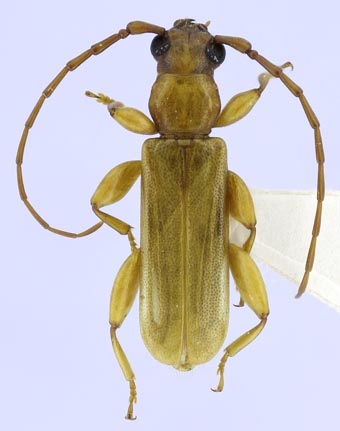|
Smodicini Classification
Selected References to Larvae Specimens |
 Marupiara castanea Martins & Galileo, 2006; dorsal ♀ specimen Cerambycidae:Cerambycinae:Smodicini Photograph © G.D. Ouellette  Smodicum angusticolle Aurivillius, 1919; dorsal Cerambycidae:Cerambycinae:Smodicini Photograph © A.M. Hodson |

